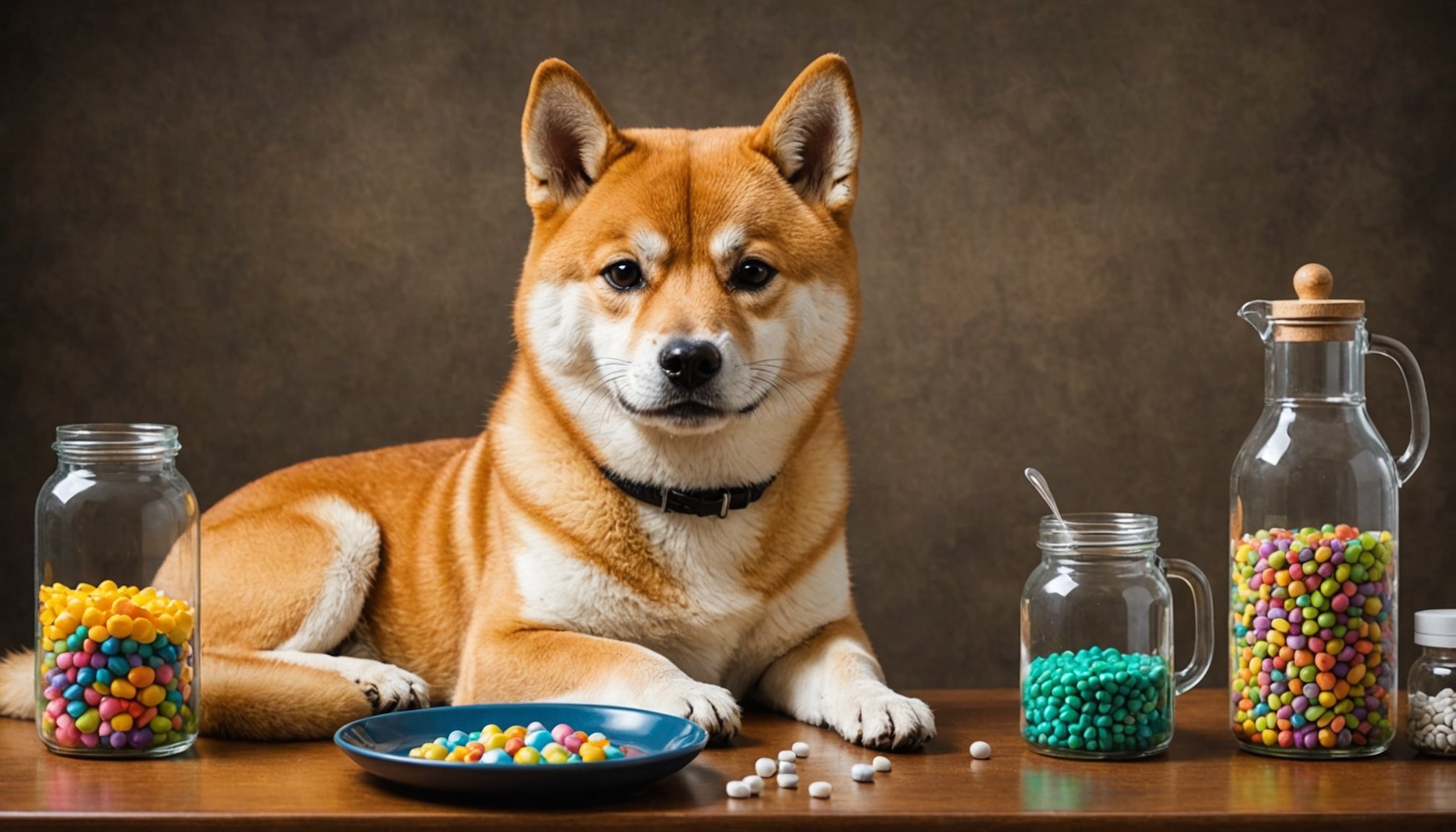Understanding the Challenges of Administering Medications to Shiba Inus
Shiba Inus are known for their independent and strong-willed nature, which can present unique challenges when administering medication. These dogs often exhibit certain behavioral traits, such as stubbornness, which can complicate medication routines. Understanding these traits is crucial for effective handling.
The resistance to taking medication in Shiba Inus can stem from various factors. One common hurdle is the taste and texture of the medication. Shiba Inus are particularly sensitive to flavours and can quickly turn away if a pill or liquid tastes unpleasant or feels unusual in their mouths. Additionally, previous negative experiences, such as gagging or forced administration, can lead to entrenched avoidance behaviours.
Also read : Ultimate guide to ready your irish wolfhound for thrilling long-distance adventures
To address these challenges, owners must fully comprehend breed-specific traits. For instance, Shiba Inus tend to be food-motivated, enabling owners to use tasty treats or pill pockets to mask the medication’s presence. Employing a calm and low-stress environment can also ensure a smoother process, as Shiba Inus respond poorly to pressure or rushed settings. Recognizing and adapting to these behavioural nuances will enhance the success of medication administration efforts dramatically.
Preparing for Medication Administration
Proper preparation is vital when administering medication to a Shiba Inu, ensuring a smoother experience for both the pet and the owner. Start by gathering essential tools such as pill pockets, syringes, or favourite treats. These items can help disguise medication flavours, making it more appealing to your pet. Planning the process by understanding the medication specifics and confirming the correct dosage is key to preventing any mishaps.
Also read : How should I adjust my dog’s diet if they are overweight or underweight?
Creating a calm environment is crucial as it makes the Shiba Inu more receptive and less anxious. Consider preparing the space where you will administer the medication, eliminating any potential distractions. This ensures that your pet remains focused and relaxed.
Organizing everything ahead of time significantly increases the chances of successful medication administration. Ensuring you have all necessary tools at hand will allow for a swift and less stressful experience. Using familiar treats or favourite toys can also help maintain the Shiba Inu’s interest in the session, reducing resistance and promoting acceptance.
Remember, each Shiba Inu may respond differently, so it might take several attempts to find the most effective method. With the right preparation, you can tailor the approach to meet individual needs, supporting a smooth medication process.
Step-by-Step Techniques for Medication Administration
To successfully medicate a Shiba Inu, using the right techniques is essential. Let’s explore some practical methods that cater to their unique temperament.
Using Treats and Pill Pockets
Introducing medication through treats can foster positive associations. Choose treats your Shiba Inu loves and use pill pockets to hide the medication seamlessly. Ensure that the treat disguises the pill completely in both taste and texture, as this breed can be particularly discerning.
Direct Administration Techniques
When opting for direct administration, position your Shiba Inu safely, ensuring both comfort and security. Gently tilt their head back and place the pill at the back of the throat. Close their mouth and softly stroke their throat to encourage swallowing. This method requires patience and confidence to minimize stress.
Alternative Methods
Liquid medications can be administered via syringe. This involves inserting the syringe gently into the side of the mouth, near the cheek, and slowly releasing the liquid. For those who face challenges with pill form, compounding pharmacies offer flavoured medications suitable for Shiba Inus. Additionally, some pills can be crushed and mixed with food, though it’s important to consult a veterinarian before doing so.
Troubleshooting Common Issues
Encountering medication troubleshooting with Shiba Inus can be challenging but manageable with insight. A common sign of resistance during medication time is vocalization or avoidance behaviour. They may whine, move away, or even hide. These behaviours indicate anxiety or discomfort, especially if they had negative experiences previously.
To address these common challenges, owners can employ behavioural modification strategies. Start by gradually desensitizing your pet to the medication process. This can be achieved by allowing them to explore the medication tools without administering anything. Offer praise and treats to create a positive association over time.
Managing nausea or discomfort, another concern, requires attention. Ensure the medication is swallowed with food as some medications cause stomach upset when given on an empty stomach. Also, observe your pet closely after administering medication. If they show signs of discomfort such as drooling or vomiting, consult with a veterinarian for alternative solutions.
By systematically identifying signs and incorporating supportive strategies, you can alleviate medication-related issues in Shiba Inus, ensuring a smoother process. Remember, patience and consistency in addressing these challenges can lead to a more positive experience for both pet and owner.
Reinforcement Techniques
Exploring positive reinforcement methods can significantly improve a Shiba Inu’s response to medication routines. This approach encourages desirable behaviour by associating it with rewards, thereby helping them feel at ease.
Reward-based training is essential for successful medication administration. Offering treats immediately after a positive medication experience reinforces calm behaviour, making future administrations easier. Over time, your Shiba Inu will associate the act of taking medication with positive outcomes.
Creative avenues can be employed to reinforce calm behaviour during medication time. Engaging in playful activities before and after administering medication can create a pleasant routine that your Shiba Inu will look forward to. This tactic ensures they’re neither anxious nor resistant during the process.
For effective training aids, consider using praise, treats, and play. Each of these elements can serve as powerful motivators. After administering medication, take a moment to engage your Shiba Inu with their favourite toy or offer a special treat.
By consistently employing these techniques and investing time in behaviour modification, both pet and owner can enjoy a more harmonious medication administration experience.
Expert Insights and Testimonials
Gain valuable insights from seasoned dog owners and veterinarians to enhance your approach to Shiba Inu medication. Experienced owners often share that understanding your pet’s individual quirks is pivotal. Pet owner stories highlight personalized methods, such as consistency with treats that align with a dog’s specific taste preferences. This aids in making the medication process less daunting.
Expert veterinarian advice underscores the importance of adapting techniques. For instance, veterinarians suggest gradually introducing medication tools in familiar settings to alleviate pet anxiety. Emphasizing patience, they encourage owners to remain calm, asserting that this demeanor markedly influences their pet’s acceptance.
Incorporating expert tips, like those from dog trainers, enhances behavior modification strategies. Trainers recommend engaging your Shiba Inu in light play or activities prior to medication to dissuade resistance and foster calmness. Utilising these methods, owners can create a routine that respects the innate strong-willed nature of Shiba Inus, thereby improving cooperation.
Consulting with professionals ensures a tailored approach suited to your Shiba Inu’s needs. As each dog may respond differently, personalized strategies from experts can dramatically alter the success rate of medication administration, positioning both pet and owner for a more positive experience.









